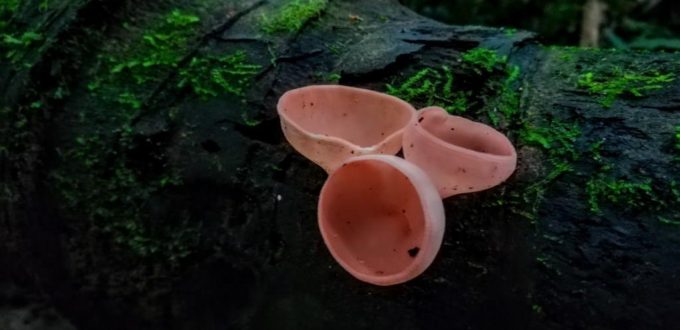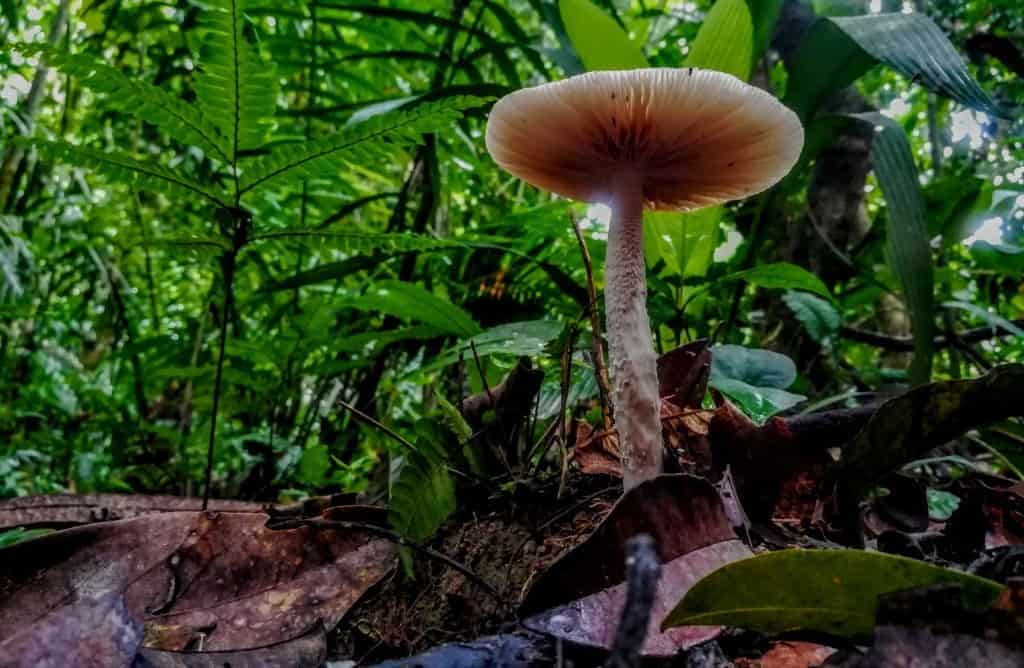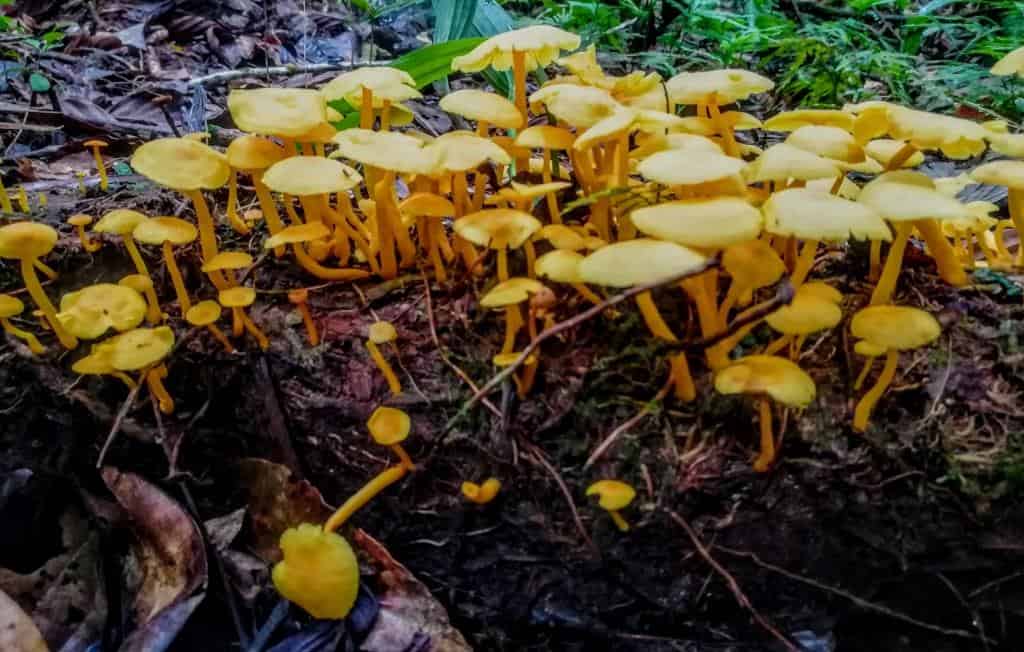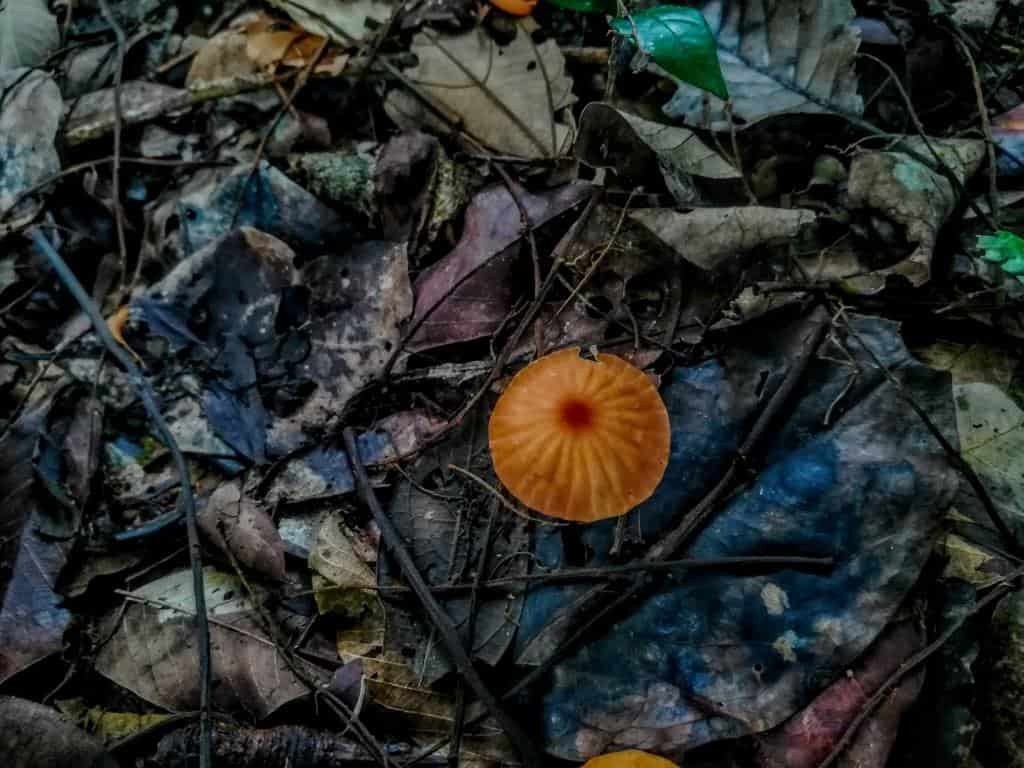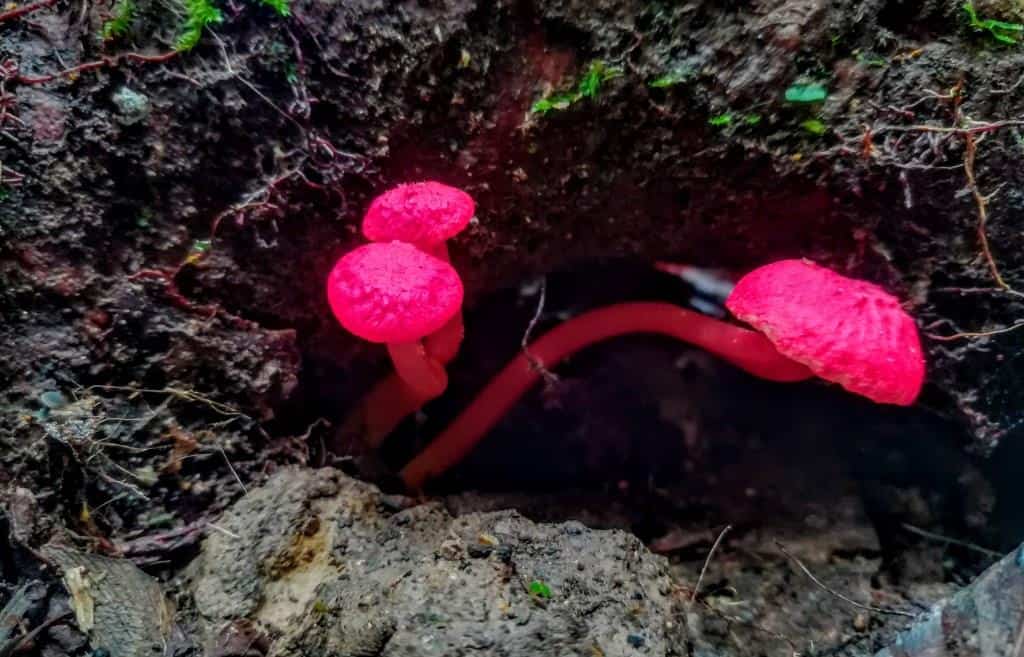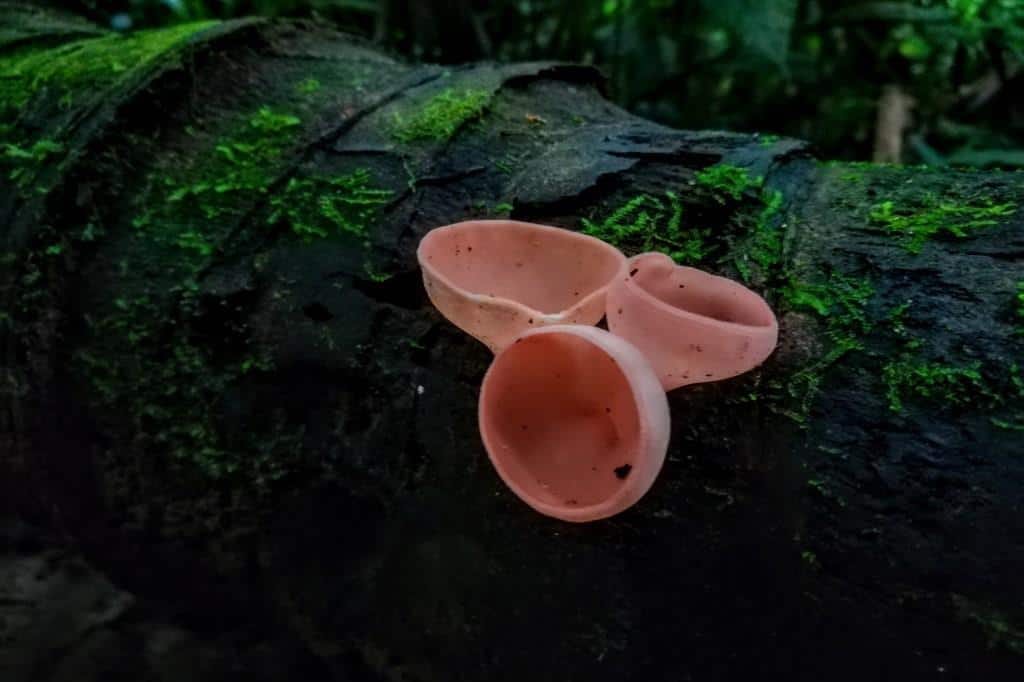Learn about the Mushrooms and Fungi in the Amazon Rainforest in Ecuador.
The Fungi or Mushrooms are a phylogenetically diverse group of microorganisms that are all heterotrophic (absorptive nutrition) eukaryotes, unicellular (i.e. yeasts) or hyphal (i.e. filamentous), and reproduce by sexual and/or asexual spores.
The Mushrooms and Fungi from the Amazon Rainforest are essential functional components of the Amazonian ecosystem as decomposers, symbionts, and pathogens and fungi represent one of the most biodiverse groups of organisms on earth.
However, our knowledge of their diversity and ecological function in Neotropical Amazonian Lowland forests is limited.
The ecological interaction of macrofungi with other organisms in these forests is poorly understood due to the largely unexplored, but likely huge, fungal diversity, as well as the cryptic and ephemeral nature of many fungal species.
Where is located the Fungal Hub Diversity in the World?
A major part of the global but unknown fungal biodiversity is assumed to occur in Tropical Regions, where the diversity of fungi may be higher than in temperate regions.
- Tropical Regions favor environmental conditions throughout the year, a higher diversity of vascular plants that create niches and microhabitats for fungi, and the presence of many ecotones.
- The diversity of macrofungi in tropical forests showed that the highest diversity in the Neotropics occurred in the Amazon Basin with Agaricomycetes, Pyrenomycetes, Xylariaceous, and Hyphomycetous fungi being the most species-rich.
The Amazon Rainforest is Heaven for Mushrooms
The Amazon Basin is the perfect location if you would like to become a Fungi, the constant humidity combined with heat is the perfect combination for fungi to diversity in the Amazon Basin.
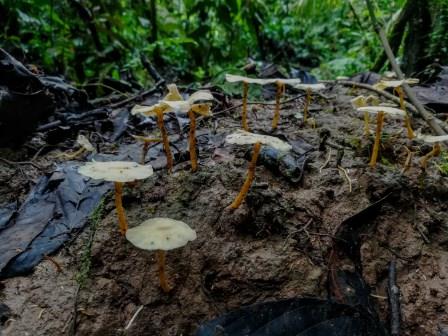
The Mushrooms and Fungi in the Amazon Rainforest play an important role in the ecology of this huge wilderness, these organisms do a critical job of decomposing all kinds of materials from the forest itself.
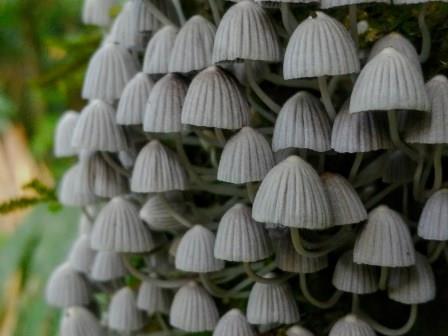
Everything is a resource in the forest, follow this: From an old and finished canopy leaf falling to the ground where the community of mushrooms, fungi, and many invertebrates specialized in turning useful everything to the basic elements of nature: Carbon, Nitrogen, Hydrogen, and Oxygen.
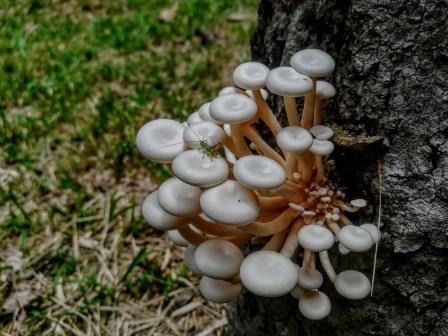
A tiny portion of the colors and shapes of the diversity of Mushrooms and Fungi of the Amazon Rainforest can be found during a short walk on the trails nearby.
Move slowly, fix your looks in the ground, along the trunk, the nearby light gap can be very rewarding, some mushrooms and fungi are still in use by indigenous people to treat, diseases or food in some cases.
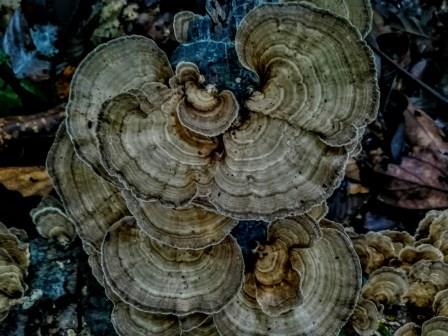
The diversity of Mushrooms and Fungi from the Amazon Rainforest in Ecuador is captured in photos after a short walk around the trails of Shiripuno Amazon Lodge. Enjoy it.
Where to find them?
You can find almost everywhere in the forest, here are some locations:
-
Light Gaps
Light Gaps in the forest form predominantly when trees fall by wind and storms. After a few months, we can find a whole series of fungi over time.
-
Rotting Trees
Rotting Giant Trees can be a perfect place to watch a timelapse of the different fungi community coming with different fruiting over and over.
-
The soil in Terra Firme
The Soil in the Terra Firme habitat is poor by nature in terms of nutrients for life, specialization is the key for those species living in here, many unique Jelly Fungi can be found around
-
Soil in Varzea
The Soil in the Varzea is a sediment-rich habitat, and species of fungi need to be faster decomposing all the flooded community.
-
Territories
The are many species of Mushrooms and Fungi with territories of more than 10 years!
Have fun finding them in the forest.
The Mushrooms and Fungi from the Rainforest
The true fungi (kingdom: Mycota) are divided into four divisions:
-
Chytridiomycota,
-
Zygomycota,
-
Ascomycota
-
Basidiomycota
ASCOMYCOTA: CUP FUNGI
The family of fungi Ascomycota produces mushrooms that tend to grow in the shape of a “cup”. Spores are formed on the inner surface of the fruit body (mushroom)
-
Cookenia tricholoma
-
Cookenia speciosa
-
Phillipsia domingensi
-
Daldinia eschscholzii
-
Entonaema pallida
ASCOMYCOTA: CORDYCEPS & ALLIES
-discovered by the British naturalist Alfred Russel Wallace in 1859.
-
Cordyceps cylindrica
-
Metacordyceps martialis
-
Ophiocordyceps amazonica
-
Ophiocordyceps nutans
-
Ophiocordyceps australis
ASCOMYCOTA: XYLARIA & ALLIES
-
Camillea leprieurii
-
Xylobotryum portentous
-
Xylaria telfairii
-
Xylaria sp
-
Thamnomyces chordallis
Basidiomycetes mushrooms comprise a diversity of gill fungi that occur in most terrestrial ecosystems worldwide, their diversity and biological applications in tropical ecosystems remain almost unknown.
Some Basidiomycetes species from Amazon tropical rainforests have been described as sources of primary and secondary bioactive compounds with antimicrobial, anti-inflammatory, immunomodulatory, antiparasitic, and antitumoral metabolites and as nutraceutical foods.
In addition, some Basidiomycetes have demonstrated potential as producers of interesting prototype molecules for the development of drugs useful in medicine.
BASIDIOMYCOTA: JELLY FUNGI, GASTEROMYCETES, CORAL
-
Auricularia fuscosuccinea
-
Auricularia delicata
-
Dacryopinax spathularia
-
Tremella fuciformis
-
Tremellodendron schweinitzii
BASIDIOMYCOTA: GASTEROMYCETES
-
Laternea dringii
-
Phallus sp.
-
Staheliomyces cintus
-
Clathrus sp
-
Geastrum schweinitzii
-
Myriostoma coliforme
-
Lycoperdon nigrescens
-
Calvatia cyathiformis
-
BASIDIOMYCOTA: CORAL
-
-
Ramaria sp.
-
Scytinopogon angulisporus
-
Deflexula sprucei
-
Deflexula subsimplex
-
Phlebopus sp
-
MYXOGASTRIA: SLIME MOLDS
-
Arcyria denudata
-
Ceratiomyxa fruticulosa
BASIDIOMYCOTA: NON-AGARIC
-
Cymatoderma dendriticum
-
Cymatoderma dendriticum
-
Hydnopolyporus sp.
-
Cotylidia aurantiaca
-
Hymenochaete damaecornis
BASIDIOMYCOTA: AGARICALES – GILLED MUSHROOMS
-
Pleurotus djamor
-
Neonothopanus sp
-
Oudemansiella canari
-
Macrolepiota colombiana
-
Lepiota hemisclera
-
Leucocoprinus birnbaumii
-
Marasmius haematocephalus
-
Marasmius berteroi
-
Marasmius cladophyllus
-
Marasmiellus volvatus
-
Marasmiellus sp
-
Tetrapyrgos nigripes
-
Collybia nivea
-
Collybia aurea
-
Hygrocybe sp
-
Xeromphalina tenuipes
-
Trogia cantharelloides
-
Favoloschia sp
-
Schizophyllum commune
-
Psilocybe cubensis
-
Coprinellus disseminatus
-
Agaricus sp
-
Vovariella sp
-
Polyporus trichloma
-
Favolus tenuiculus
-
Lentinus concavus
-
Lentinus strigosus
-
Earliella scabrosa
-
Pycnoporus sanguineus
-
Lenzites elegans
-
Amauroderma sprucei
-
Ganoderma applanatum
-
Rigidoporus microporus
Common Mushroom and Fungi
Cookeina
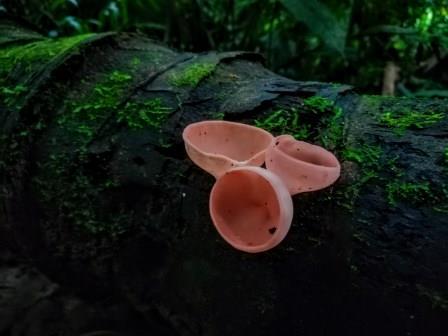
Coprinellus

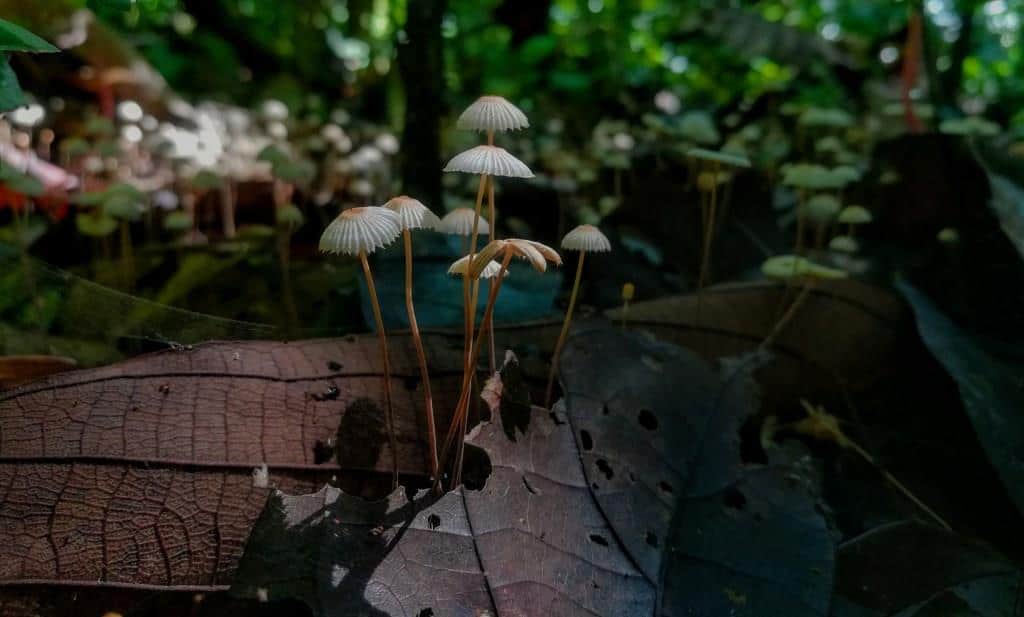
Come and Enjoy the Diversity of Mushrooms and Fungi on Our trip to Ecuador.
